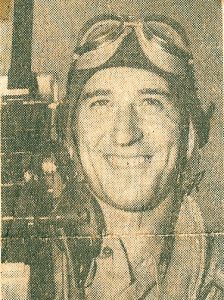Bowden, John B.
Army Staff sergeant
John B. Bowden from Pennsylvania, Fayette county.
Service era: World War II
Date of death: Tuesday, February 22, 1944
Death details: On February 22, 1944, a B-25G Mitchell (serial number 42-64779) with a crew of seven took off from Kurmitola, India, for a bombing mission against railroads in Monywa, Burma. While en route to the target, another aircraft crew on the mission witnessed the Mitchell catch fire and crash into a field on the banks of the Chindwin River, near Letpadaung, Burma. Witnesses did not report seeing any signs of survivors, and enemy presence in the area prevented searches of the crash site at the time. Post-war investigations discovered that, following the crash, Japanese soldiers had commanded Burmese locals to search and strip the wreckage of the B-25G and bury the bodies of the crew. Subsequent American search efforts to locate the remains of the crew from the crash site were unsuccessful, and all seven are still missing. Staff Sergeant John B. Bowden entered the U.S. Army Air Forces from Pennsylvania and served in the 490th Bombardment Squadron, 341st Bombardment Group (Medium). He was the engineer aboard this Mitchell when it caught fire and went down. He was killed in the crash, and attempts to locate his remains following the end of hostilities were unsuccessful. Today, Staff Sergeant Bowden is memorialized on the Walls of the Missing at the Manila American Cemetery in the Philippines.
Cemetery: Manila American Cemetery
Source: National Archives, American Battle Monuments Commission, Defense POW/MIA Accounting Agency
